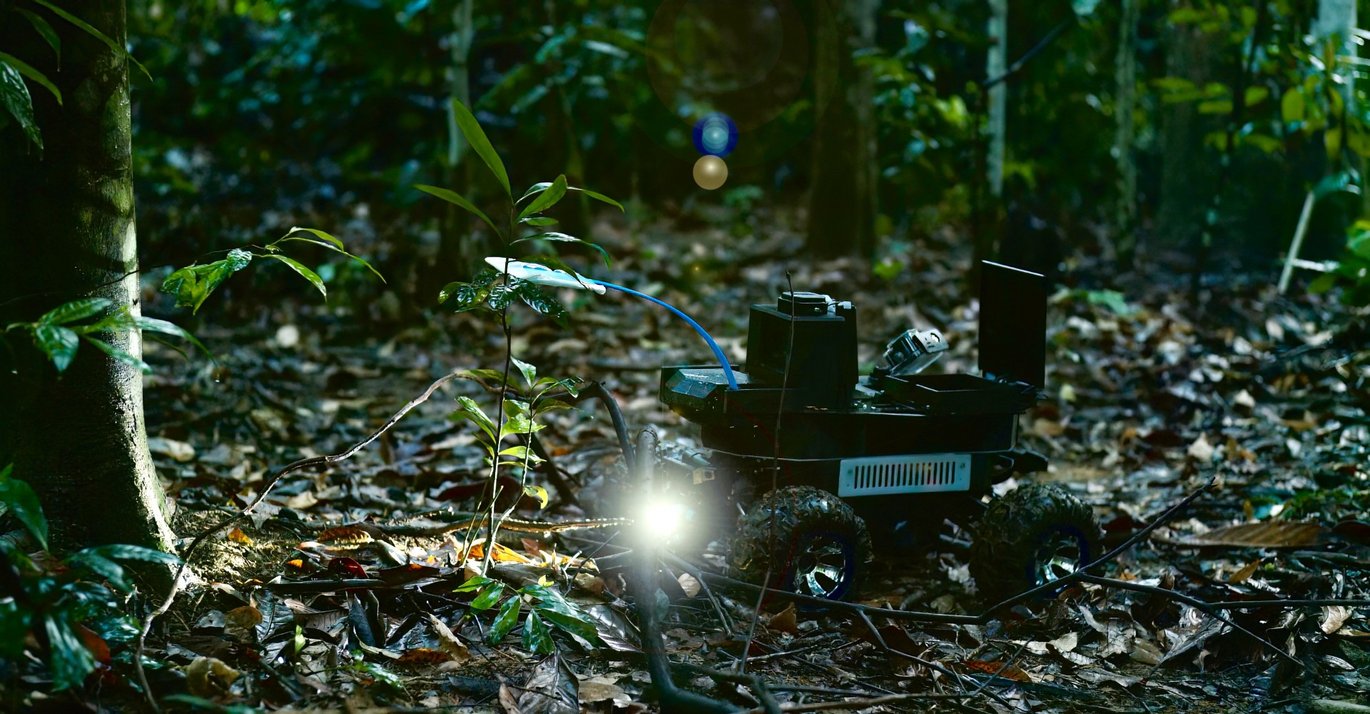Smart robot can help us learn more about rainforest biodiversity
A Danish research team has developed a robot that can push its way through dense jungle thickets and map biodiversity. The robot will boost monitoring of endangered species and provide new insights into how we can take better care of one of the planet's most complex ecosystems.

At first glance, it looks like a toy - a remote-controlled car with high suspension and thick tyres.
But if you look a little closer, you’ll realise that you're wrong. The vehicle is actually an advanced robot that can navigate semi-autonomously through dense tropical rainforest and is equipped with highly advanced technology.
The researchers behind the robot come from Aarhus University and they comprise an interdisciplinary team of biologists and engineers. Together, they’ve been developing the prototype for more than three years. They have tested it in extreme conditions in Asia's tropical shallow water jungles, and they’re surprised at how well it works.
"It’s been no easy engineering task to make the robot, but we’re delighted with our results, and I believe we now have an invention that can have a positive impact on nature monitoring in the future," says Claus Melvad, professor at the Department of Mechanical and Production Engineering at Aarhus University.
Much more efficient than humans
The robot makes its way through the jungle without destroying vegetation or disturbing wildlife. At the same time, it collects many different types of data in real time to provide a detailed picture of biodiversity.
In its current form, the robot has a range of 500 metres and can operate for four hours when it is actively moving around and searching for data, and 12 hours at night when it remains still and lures animals towards it with smell and light.
Although the robot is limited by its battery life, it is impressively efficient. Finding and mapping animal and plant species in nature is a time-consuming and highly specialised task for biologists.
"Especially in impassable rainforest," says Claus Melvad.
After a difficult test expedition with the robot in the rainforests near Singapore last summer, he now has first-hand experience of how it works.
"It's extremely hot, extremely humid, and extremely dense, making it extremely difficult to fight through the scrub and mud. There’s also a high risk of destroying plants or disturbing endangered species, which is always a major limitation in data collection," he says.
The professor hopes that the robot, which has been optimised for the extreme conditions, will soon enable more systematic monitoring of biodiversity in the world's rainforests.
A wealth of data from the jungle
The robot is a small rover, measuring just 30x40 centimetres. It trundles through scrub or finds trampled animal tracks that it can use to make its way through the terrain more easily.
It records both animals and plants in the rainforest using many different types of monitoring equipment. An acoustic biosensor picks up sounds from insects, reptiles and mammals. Cameras all around capture images of vegetation and wildlife, and the lure module developed by the researchers, which is fitted with a special light and smell to attract many different species, ensures there's plenty of activity.
On the side of the rover is a small swab with a kind of cloth that scrapes genetic material from the forest floor and vegetation. On top, it has a small device that sucks air through a filter to collect invisible DNA from the air.
Researchers process the vast amount of data with artificial intelligence, which finds patterns and creates an overview of the variation of animals and plants, and identifies new species.
Toke Thomas Høye is a professor of biodiversity at the Department of Ecoscience at Aarhus University, and he and his research group have trained the machine learning models that merge all the data and act as a kind of brain for the robot.
By combining the information from the different sensors with information about genetic material, researchers can get a really good picture of the biodiversity in an area, and this is important for effective nature conservation.
"If we want to conserve biodiversity and protect wildlife and habitats, we need to make decisions based on knowledge about what is actually happening. We can’t protect what we can’t measure. Therefore, we need technology to help us monitor large areas efficiently, and we need it urgently," says Toke Thomas Høye.

